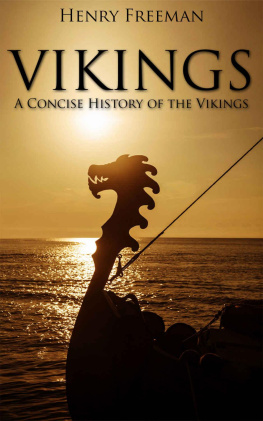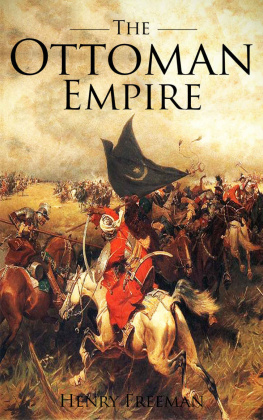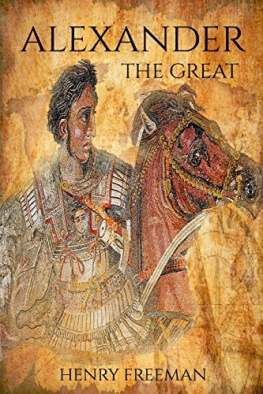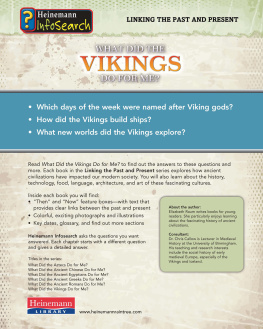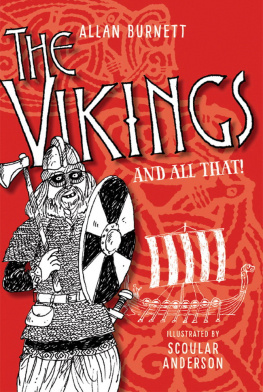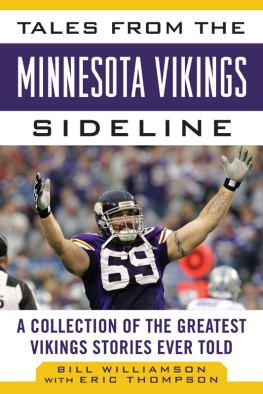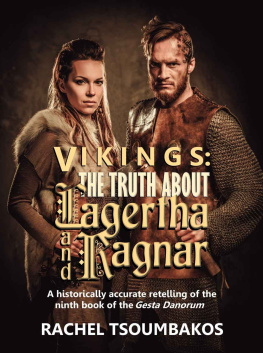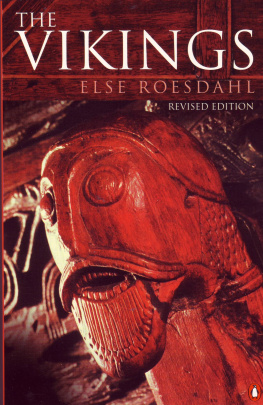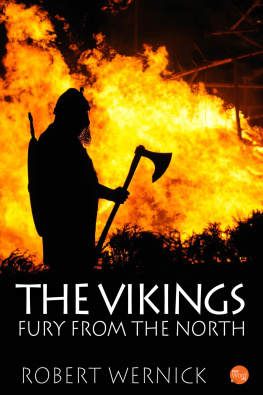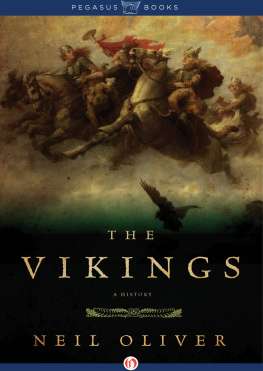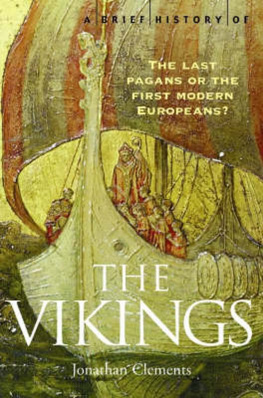Vikings
From Beginning to End
BY
Henry Freeman
2016 Copyright
No part of this book may be reproduced in any form or by any electronic or mechanical means including information storage and retrieval systems, without permission in writing from the author.
Table of Contents
Introduction
From the Fury of the Northmen
It was a dark day in 793 AD when Viking ships landed on the island of Lindisfarne just off the shores of England. Accounts from this tragic day report a complete siege of this holy site that left those who were unlucky enough to be unable to escape either dead or in chains. The church was also viciously looted of some of its most valuable possessions. The peaceful monks of the monastery never could have imagined such brutality and disregard for what they viewed as sacred and holy.
This event undeniably left its mark in dramatic fashion on the terrified monks of the Lindisfarne monastery, the memory of which struck so much fear that it made its way into the official church liturgy; with the survivors of Lindisfarne adding at the end of their prayers the heartfelt plea, From the fury of the Northmen, O Lord, deliver us. But why were these men from the northernmost frontier of Europe so seemingly ferocious? What caused them to descend out of Scandinavia and terrorize all of Europe?
For much of history the motives behind the Viking raids of Christian Europe have been greatly obscured and misunderstood. The sudden assaults on Christian monasteries in 793 are often just shrugged off as a crime of opportunity or a random act of wanton brutality, but when you take a look at what else was going on in 793 AD, the story starts to get a bit more complicated than that.
Just previous to this first Viking onslaught, during that very same year, the Frankish ruler Charlemagne had made a special alliance with England. This was a frightening prospect for the Scandinavian society that the Vikings came from. At that time the Franks constituted the greatest single fighting force in Europe and the Frankish Empire that Charlemagne ruled over had been tightening its grip on the Norse people for decades.
As early as 743, the Frankish leader Karl Martell had laid waste to the Danish principality of Friesland. This siege was launched on the populace for no other reason than the fact that they were Pagan. And when Charlemagne came to the throne in 768 he would soon follow in these very same intolerant footsteps of persecution. Viewing himself as the inheritor of the Roman Empire, Charlemagne was the most powerful ruler in all of Christian Europe.
As such, Charlemagne had made it his mission to bring Christ to all corners of Europe at any cost. As a consequence he began a long campaign aimed towards expanding his reign in the north, seeking to subjugate the Nordic lands of Denmark and Northern Germany. He was relentless in his goal and under his heavy hand the holy sites and religious adherents of the Norse religion of Scandinavia found themselves under siege.
So it seems that before a Viking foot ever trampled over religious relics in the Lindisfarne monastery, Frankish knights were laying waste to the sacred ground of the Vikings. And among the most traumatic events in this holy war being raged against the Norse was in 772, when Charlemagne ordered to have the holy tree Yggdrasilan object of great religious meaning to all the would-be Vikings of the regionburned down to the ground.
Yggdrasil; also known as the world tree, was believed to hold all of creation in place until the day of Ragnarok, the Armageddon of Norse mythology. As a consequence, from the perspective of the Vikings, Charlemagne just might have set off the first spark in the lighting of the Viking version of the Apocalypse. And seemingly to further inflame this sentiment of destruction and desolation, the Franks werent content just to leave the Norse with the empty ground when this sacred tree was torn down; like a giant flag of triumph, the Christian cross was raised in its place on the exact same spot where Yggdrasil had once stood - a message to the Norse people, loud and clear, to let them know exactly what it was that was supplanting their ancestral culture and beliefs.
In response to this religious usurpation, and the burning of Yggdrasil, the Scandinavians decided to fight fire with fire. They responded in kind by torching several churches that had sprung up in their territories. The wrath of Charlemagne would soon strike them again ten years later however, when in 782 he ordered 4500 Pagans in Northern Germany and Southern Denmark rounded up and forcibly baptized. When these religious captives still refused to convert, he had them all beheaded.
As events like this and others were being perpetrated and the reach of Charlemagne encroached closer and closer to the Scandinavian homeland, the Frankish Empire was perceived as a real threat to the Norse people. And so when just a decade after events like the 782 massacre, when word reached the Vikings in 793 that England had essentially become a vassal state to their dreaded enemy, the Franks, the Viking leaders decided to hit back with a preemptive strike that would launch what would essentially be a 200 year long war against Christian Europe.
Chapter One
Retaliation, Royal Ambition, and Bribery
When the Frankish ruler Charlemagne was officially crowned the Emperor of his new Holy Roman Empire in the year 800 CE, he didnt have room for any new threats or insurgencies. The prospects for a peace however were poor. Just two years prior to his coronation in 798, churches were burned down to the ground on St. Patricks island. And then most startling of all for the Franks, in 799 the Vikings had laid siege to the coastal region of France called Aquitaine, stabbing right at the heart of the Frankish Empire.
As a consequence the Franks became determined to make sure that incidents like these would not repeat themselves. To counteract the Viking advance Charlemagne dispatched a whole fleet of ships in the Elbe to protect the region, as well as organizing stronger coastal fortifications for defense. And it seems that these efforts did temporarily hold back the Viking advance; the raids immediately after this were refocused on northern Britain rather than on southwestern France.
Starting in that fateful year of 800, Norwegian bands began establishing themselves in the Orkneys and the Shetlands, part of the northernmost islands of Scotland. These new outposts then became the staging grounds for new campaigns against the monasteries of Iona, giving the Monks of Iona an unpleasant surprise in 802, followed up by an even more brutal siege that occurred in 806 which left 68 monks dead in its aftermath.
But the most traumatic instance that the residents of Iona would commit to their memory was the massacre of 825 in which Saint Blathmac was martyred after he failed to produce the treasures and relics that the Vikings had demanded from him. This was a shocking blow to Christendom since the monastery of Iona was the holy site of none other than St. Columba, the Christian missionary who had managed to convert all of Western Scotland to Christianity in 563 AD. The body of this saint and any accompanying relics were revered by his fellow monks as something greater than gold and were guarded fiercely.
It was in his attempts to make sure that St. Columbas rest remained undisturbed that St. Blathmac became a martyr himself. In the Christian faith of the Middle Ages, it was a widespread belief that a literal resurrection of the saints would occur at the second coming of Christ. It was in this line of thinking that preserving the dead bodies of the Saints became of such a paramount importance.

